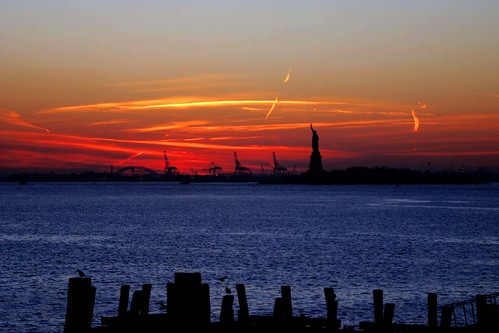 Post: Crain's NY
Post: Crain's NY
By: Daniel Massey
Photograph: A. Golden, eyewash design, c. 2009.
February 02, 2009 3:49 PM
Tougher new law requires 90 days notice before layoffs or closings – up from 60 days.
Just as job losses are mounting, thousands of private employers in New York must now give an even earlier heads up to workers of mass layoffs, plant closings and relocations.The New York State Worker Adjustment and Retraining Notification Act went into effect Feb. 1 and is more expansive than the 20-year-old federal law that had previously set notification standards. Indeed, the New York law is considered the strictest in the country by some employment lawyers, who note that it applies to more employers, requires additional advanced notice and is more easily invoked than the federal WARN statute.
Employment lawyers and business advocates say the new set of rules come at the wrong time for businesses and make it harder for them to cope with the recession.
“In this economic climate, there are going to be a lot of companies that have to make changes for business reasons,” said attorney Marc Mandelman, co-chair of the Managing Change/Reductions in Force group at law firm Proskauer Rose. “These new deadlines will be extremely difficult to meet.”
The federal law required employers with 100 or more full-time employees to provide written notification of mass layoffs and closings, but the New York law applies to businesses with 50 or more full-time workers.
The new law also requires 90-day advance notice to employees and government officials, compared with 60 days in the federal rules.
And notification is now required when at least 25 employees lose their positions, if they make up one-third of the workforce, or when a company lays off at least 250 full-time employees. The federal WARN act is triggered when 50 workers who represent one-third of the workforce are let go, or if 500 workers are laid off.
The Business Council of New York State says some 13,000 small businesses that weren’t affected by the federal statute will now be covered by the state law. Many of them can’t afford to hire labor attorneys to assist with the process, the council argued.
“It makes it more difficult to do business in New York State,” said a spokesman for the group.
But a spokesman for the New York State AFL-CIO, which represents 2.2 million workers, said the law provides employees a much-needed cushion to help deal with the harsh effects of unemployment.
“Every day counts when you’re losing your job,” the spokesman said. “You have to pay the bills, pay the rent and provide for your family. Any extra time helps you deal with the horror of losing your job.”
The law empowers the State Department of Labor to hit violators with penalties of $500 per day and hold them liable for back pay and employee benefits. Under the federal law, redress is more limited.
Employers are exempt from the requirements if they can show unforeseen hardship or attempts to actively seek capital or business that would have prevented the layoff, plant closing or relocation.
But Gerald Hathaway, an employment attorney at law firm Littler Mendelson, says the exemptions don’t go far enough. New Jersey’s WARN law, for example, applies only to businesses that have been around for three years or more. He says startups and even Broadway shows now have to factor giving 90 days notice into their business plans.
“Any entrepreneur starting a business has to ask himself six months in, ‘Am I going to make it?’” Mr. Hathaway said. “If I don’t, now I’m on the hook for giving three months notice. It calls to question survivability.”
Live your values. Love your country.
And, remember: TOGETHER, We can make a DIFFERENCE!





















No comments:
Post a Comment